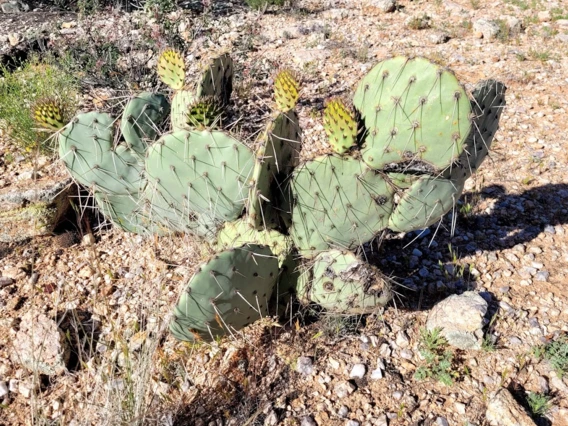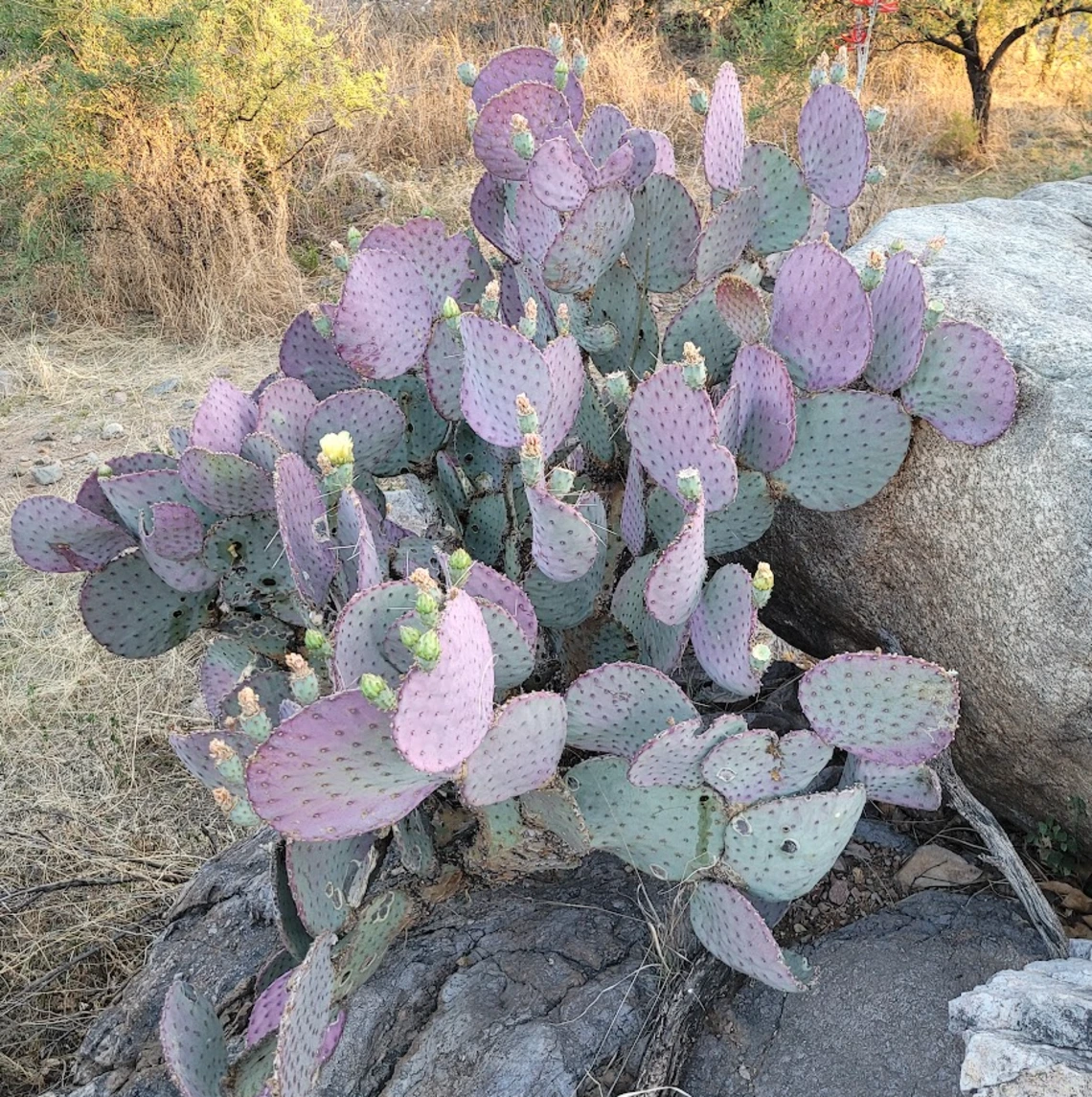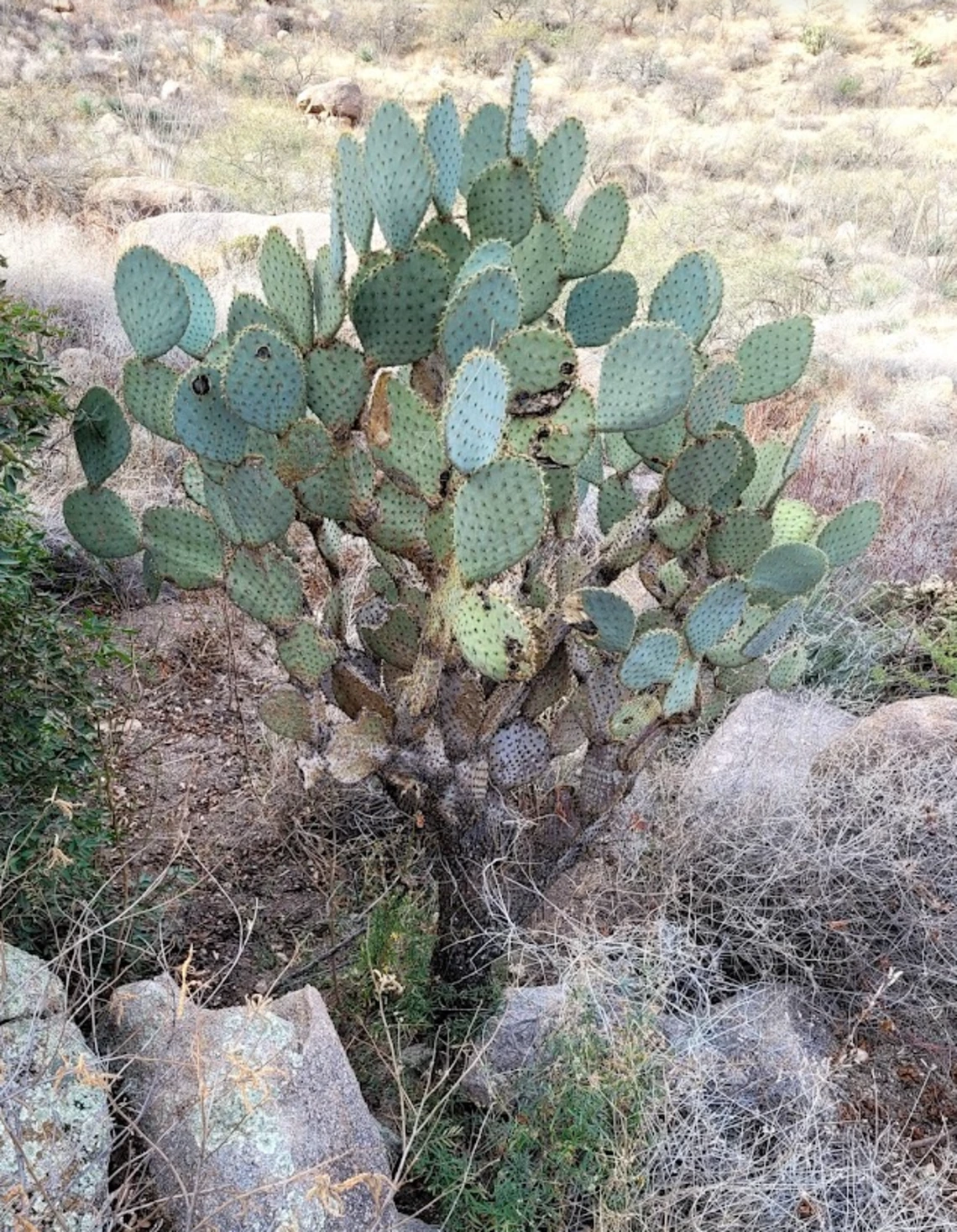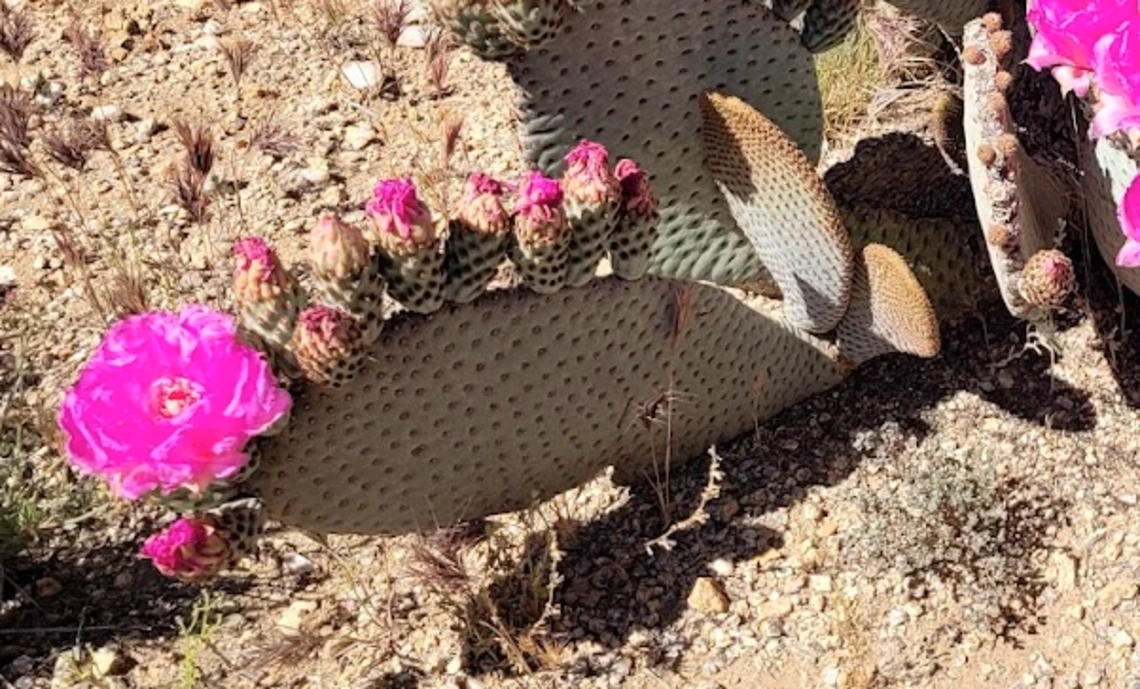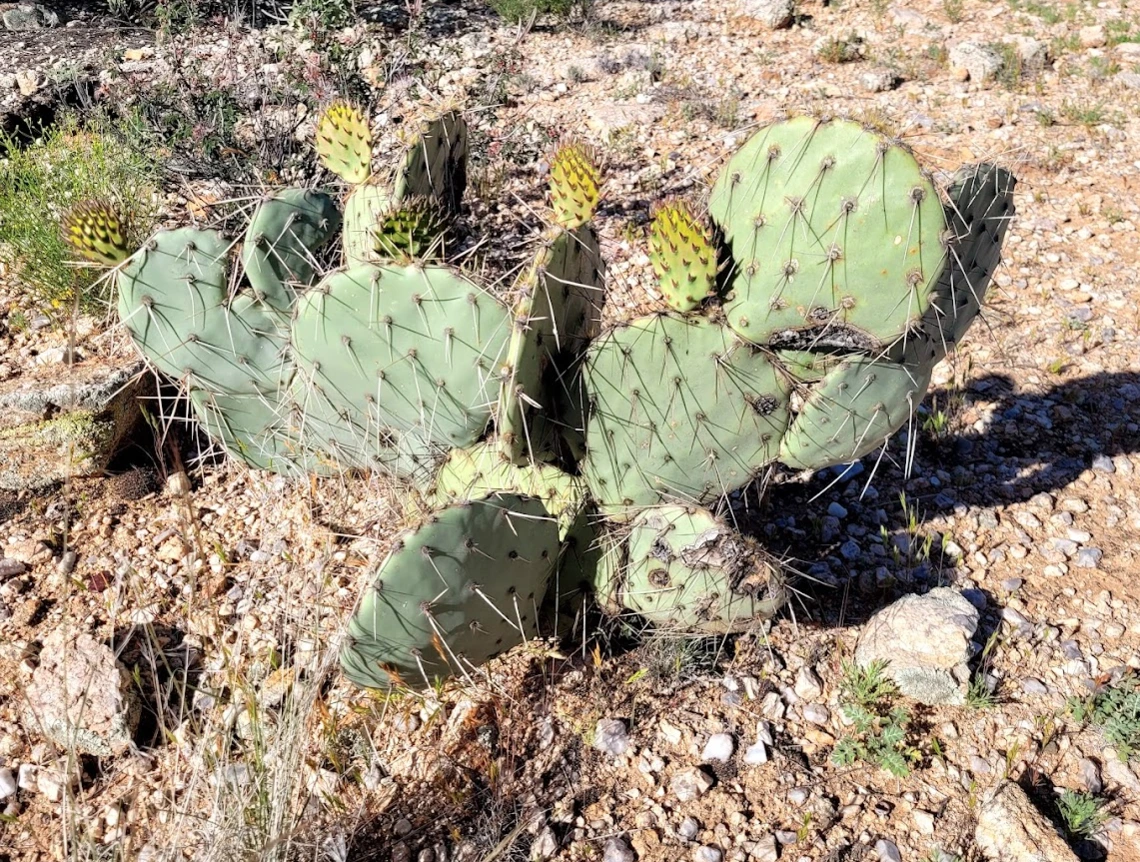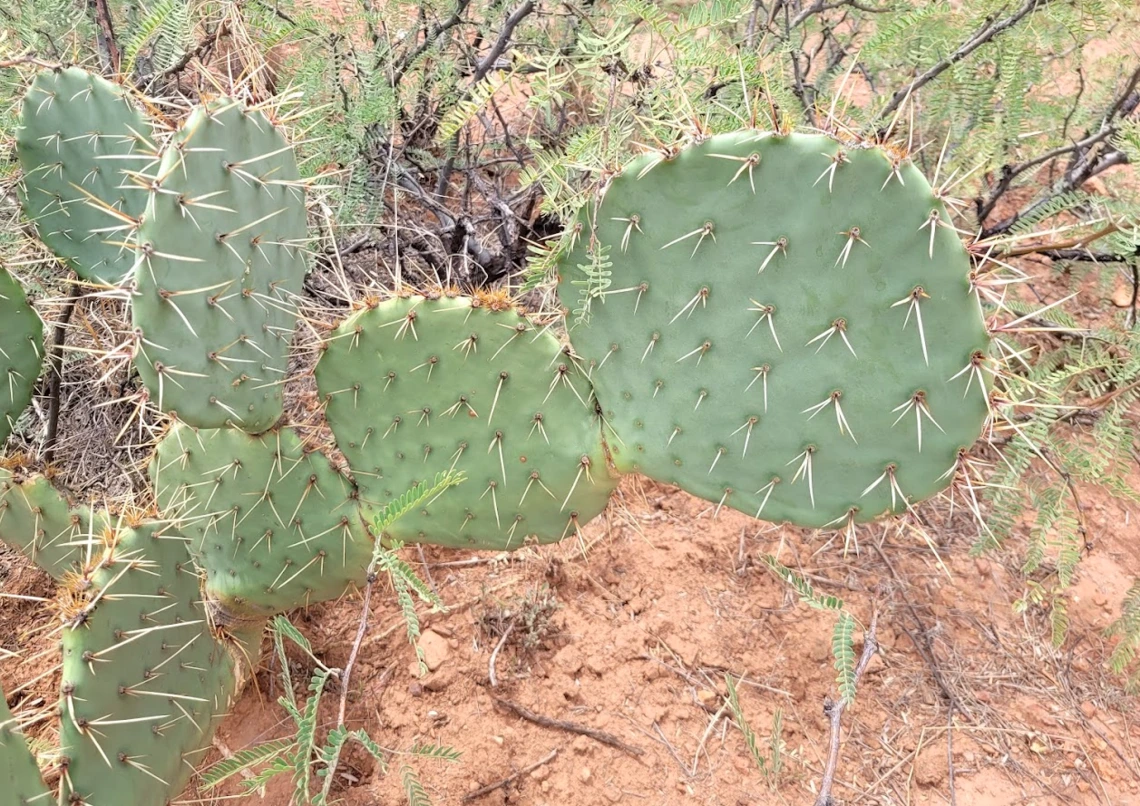Family: Cactaceae
Compound: Opu spp.
Geographic Origin: Widespread across the Americas, from the northern US through MX and down to South America
Characteristics: A variable and widely recognizable cactus with many different growth forms and sizes. Individual variation between members of the same species as well as hybridization with other Opuntia spp. make species-level identification difficult. Opuntia typically have large, flat, fleshy pads that are covered with clusters spines and glochids. These pads can be green, blue-green, blue, purple, pink and any combination of these colors depending on species and environmental conditions. These pads can be quite thick, storing water to sustain the plant through dry periods. Prickly pears bloom in late spring to early summer, producing large, colorful flowers that can be yellow, red, orange, or pink, depending on the species. These are followed by large edible, oval fruits that range in color from yellow to red.
Natural History: Opuntia sp. is found in a wide range of habitats, from deserts to grasslands to forests, substropical and tropical areas. Its broad distribution across various ecosystems demonstrates its adaptability and resilience.
Cultivation Notes: Extremely drought-tolerant and thrives in partial to full sun and well-drained soils. It is relatively easy to grow and can be propagated from seeds or more commonly, by detaching pads and planting them directly in the soil after the cut wound has had time to dry. Prickly pears require minimal maintenance and are an excellent choice for water-efficient landscaping. Care should be taken to avoid the spines and glochids which can be difficult to detect and remove but very irritating.
For general cactus and succulent propagation information, click here
Ethnobotany: Prickly pears are highly valued for both their edible fruits and pads, which are used in a variety of culinary dishes. The fruits are sweet and can be eaten raw or made into juices and jellies or made into dye. The young pads, or "nopales," are cooked and eaten. Medicinally, the plant has been used to treat diabetes, high cholesterol, and obesity. When consuming Opuntia spp., the spines and glochids must be carefully removed to avoid them sticking in your mouth and throat.
Citations:
SEINet Arizona – New Mexico Chapter. Retrieved April 30, 2024.





